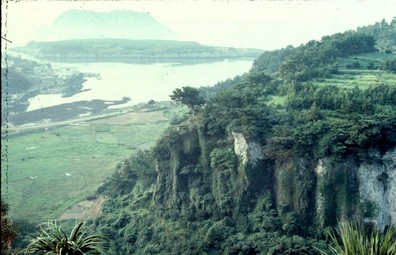 =0=
=0= =0=
=0=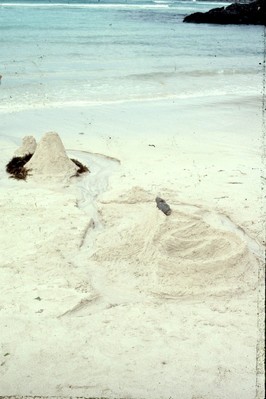 =0=
=0=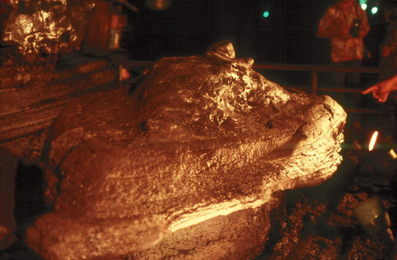 =0=
=0=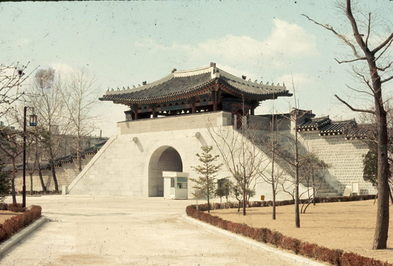 =0=
=0=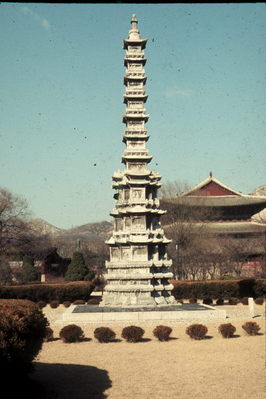 =0=
=0= =0=
=0= =0=
=0= =0=
=0= =0=
=0=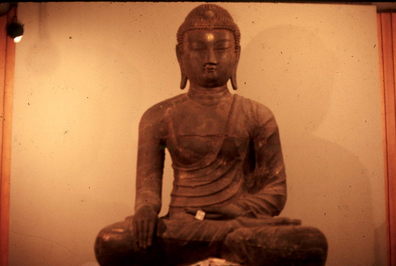
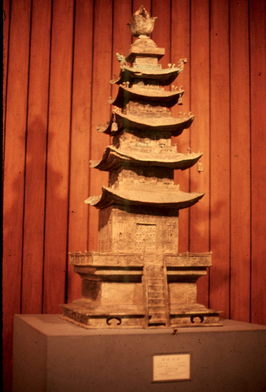 =0=
=0=| This is another view of Cheju Doh coastline. Presumably close to the hotel where we stayed though the tape gets a little confused there and, shockingly enough, my memory has faded over almost thirty years. |  =0=
=0= |
| Along the coast there were also some rocks which had been weathered into some unusual shapes. This rock is called Dragon's Head rock as it looks like a dragon head to some people. Myself having never seen a traditional dragon really can't say one way or another. |  =0=
=0= |
| The trip itenerary called for two hours of swimming, but as the water was pretty chilly only one couple even tried to swim and we decided to stay at the beach for only an hour or so. We had gone on the trip with one of Barbara's friends, Punja and her husband and Scott, their son. Scott and I made a series of sand castles. Notice how we use local grown materials (seaweed) to protect the castle from the ravages of the nature (at least for a little while). |  =0=
=0= |
| The trip itenerary included lots of different things including visits to a couple of caves. These saves were carved out by lava flow (or perhaps the gases) and this stone is about two yards long and one yard wide and is known as the turtle (as it is shaped somewhat like a turtle). The legend concerning it is that if you touch the stone you will live one year longer than you otherwise would have. Well, I decided to touch it about a hundred times, so if I live to be 125 or so, then the legend must be true (though I certainly won't be holding my breath). |  =0=
=0= |
| Next up is our visits to Seoul which we really visited twice. Once in February on Army business and once on our way home. In Seoul, we stayed at an Army recreation center hotel that was pretty inexpensive. It was about a block from the National Palace and seat of goverment. It was surrounded by a really substantial wall, about two yards high and one yard thick and had massive gates, one of which is shown here. It enclsoed an area about three blocks across in each direction. |  =0=
=0= |
| There were lots of buildings and structures inside the compound. This is an ornamental stone pagoda. |  =0=
=0= |
| At the entrance to most of the buildings there were Shi Shi dogs or ornamentals statues to protect the entrance from evil spirits. This building seemed to be an administration building and about 50 years old. Not really very impressive, but I really like the Shi Shi dogs so this is a picture with me and my Dong Mul Chin Ku (animal friend). It was pretty cold that day and while it may not look chilly, it did put a damper on our explorations. Burr! Too cold! |  =0=
=0= |
| Within the compound there were also many oriental gardens and pools and this is one of them. |  =0=
=0= |
| The National museum is also in that compound and is quite impressice (and warm, too, which was a treat for us). This is the exterior of the museum. |  =0=
=0= |
| The lower three floors are simple concrete and used for displays. The upper floors were unlit and not open to the public. Here is a statue of Buddha. We noticed that at most of the religious images there would be little piles of money as, we presumed, people made offerings to the Buddha. We wondered who would collect the money and presumed that the head of the museum would get the lion's share of the collection as a sort of undocumented supplement to his income as that was quite common in Korea at the time (jobs came with unofficial perks and gift giving was a really strong tradition). However, we really didn't know how it worked in any particular case. |  =0=
=0= |

|  =0=
=0= |
This page was last updated on September 5, 2005.